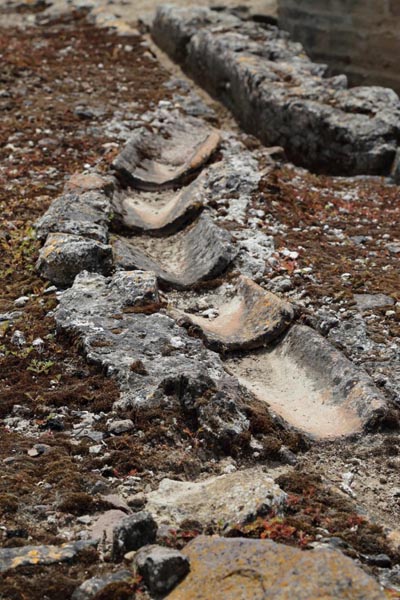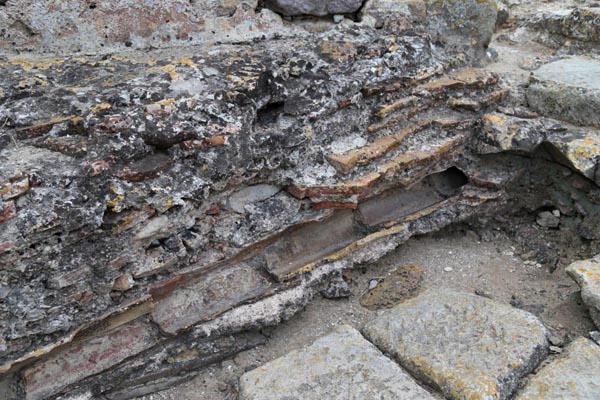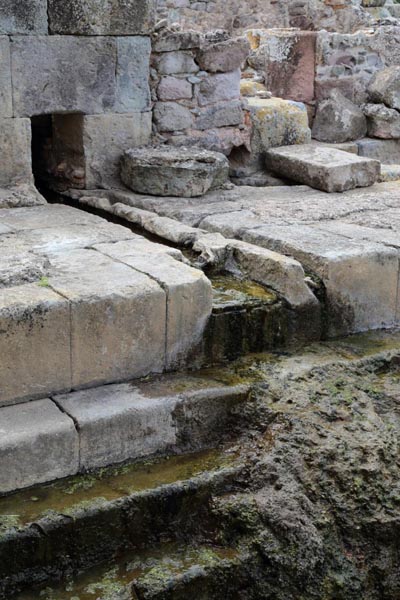The water system
The Baths of Fordongianus receive water from both a hot thermal spring and from a group of cisterns placed upstream of the building, providing the cold water needed to dilute the heat.
Both the hot and cold water flows run towards the Baths building in canals running through the paved flooring of the large square, which probably held lead pipes, now lost. Other canals were made with upturned roof tiles (fig. 1). The waters then ran through pipes placed in floors and walls (figs. 2-3) to end up collected in tanks where they were mixed before being poured into the large pool (fig. 4).
Drainage canals then carried the waste water towards the Tirso river (fig. 5).

Fig. 1 - Detail of a duct in tiles (photo by Unicity S.p.A.).<

Fig. 2 - Canal built into the floor (photo by Unicity S.p.A.).

Fig. 3 - Duct originally inside the wall (photo by Unicity S.p.A.)

Fig. 4 - Water outlet in the natatio (photo by Unicity S.p.A.).

Fig. 5 - Drainage canal from the Nymphaeum to the Tirso river
(photo by Unicity S.p.A.).
(photo by Unicity S.p.A.).
Bibliografia
- G. DE ANGELIS DE OSSAT, Tecnica costruttiva e impianti delle terme romane, Roma 1943.
- M. A. RICCIARDI, V. S. M. SCRINARI, La civiltà dell’acqua in Ostia antica, Ostia 1996.

 VR
VR